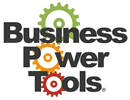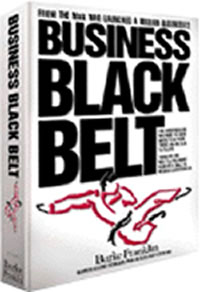Hard close or engineer a deal?
No matter the business you’re in, there are often times where the customer is already sold. In these cases, your job as the sales person is to recognize their interest, and engineer and close the deal. Do you or your company have the systems and processes in place to get the transaction across the finish line?
Two stories from my recent past illustrate how having all of your “ducks in a row” can mean the difference between closing a sale and having a ready, willing and able customer walk right out the front door.
I Want the Car – Please Take My Money!
I was visiting a friend in Colorado who really wanted to buy a new BMW. She was ready to trade in her old car, she had the money, good credit— everything. So I suggested that we go look at the cars. The BMW dealer had the perfect car — red, convertible, and loaded. The salesman was very nice, gave us the keys, and told us to enjoy ourselves. After driving around for a while, she obviously didn’t need to be convinced that this was the right car for her. The salesman ran the numbers, checked her credit, and then, over the next two hours, tried to come up with the paperwork to put this deal together.
 What went wrong? That car dealer could not engineer a transaction and generate one document that incorporated all the terms we agreed upon! A spreadsheet showed the lease vs. purchase comparison and included the desired down payment along with the number of months to get the desired monthly payment. However, there was a problem with the leasing document and a new sales pitch ensued.
What went wrong? That car dealer could not engineer a transaction and generate one document that incorporated all the terms we agreed upon! A spreadsheet showed the lease vs. purchase comparison and included the desired down payment along with the number of months to get the desired monthly payment. However, there was a problem with the leasing document and a new sales pitch ensued.
My friend knew she wanted the car; she didn’t need an extra sales pitch for a lease. All she needed was a single document to incorporate her personal information, the car’s identification, places to fill in the price, some options, taxes, financing calculations, subtract the allowance for the car she was trading in and calculate her drive-off payment (if any). This simply should have squirted out of a laser printer in one good-looking document with the particulars in bold print. The sale should have gone like this:
“Ma’am, here are the keys to your new BMW, and here’s the purchase order complete with all the numbers we agreed to. We’re giving you $x for your trade-in. All we need is a check for the down payment, your signature here, and the keys to your old car… and you’re ready to go.”
Even if she had a few doubts and was slightly fearful of completing the deal, my friend was ready to sign her name a couple of times and drive off in the gorgeous, brand new car of her dreams! It didn’t happen that way. They couldn’t get the paperwork in order while we were patient enough to stay. We left without buying the car.
An Airplane as an Impulse Buy?
Here’s a different story. I’d fantasized about owning an airplane almost all my life. But they’re expensive, I had no practical reason to own one, I should have spent my money on more practical things, blah, blah, blah.
 Nevertheless, I had learned to fly, went to airshows, and looked at all the Trade-a-Plane ads. One day I saw a good-looking plane for sale at a nearby airport, so I called the broker who had it, went to see him (just to check it out, you know…), and a couple of days later he took me for a demo flight. It was great; I was in love (with a 1980 Beechcraft V-Tail Bonanza V35B)!
Nevertheless, I had learned to fly, went to airshows, and looked at all the Trade-a-Plane ads. One day I saw a good-looking plane for sale at a nearby airport, so I called the broker who had it, went to see him (just to check it out, you know…), and a couple of days later he took me for a demo flight. It was great; I was in love (with a 1980 Beechcraft V-Tail Bonanza V35B)!
We went back to his office to talk more about it. He wanted to know what I liked and what I didn’t like. He told me it needed a few things, I wanted him to add a few things, and he agreed to take care of them. I asked about financing, so he brought up a screen on his computer. He filled in my name and the specifics of the airplane including some financing options. While he was at it, he filled in the things he would do to fix it and the things I wanted added. I knew I wanted a mechanic to look it over, so he typed in a provision for that.
When he printed it out, the entire deal was spelled out on a single page! With a nice place for my signature next to my name typed out. I knew the price was right, the details were in order, I had several ‘outs’ if the mechanic found problems or if I couldn’t get a loan, so I signed it.
I haven’t had a minute of remorse since and I’m still excited about my airplane. Despite the fact that I still needed a tie-down space at my local airport, insurance, special training, and a loan, the entire transaction, including flying the plane for an hour, talking about airplanes, and telling war stories, took less than three hours altogether!
The fact that the broker could produce a single, comprehensive document made an otherwise monumental sale go down like it was an impulse buy. I still dread going to buy or lease my next car.
Conclusion
In both cases, the customer wanted the product. The car salespeople couldn’t get out of their own way – their “systems” prevented the sale. An airplane purchase is a very complex proposition, but the broker made it easy for the customer to buy what he already wanted.
If your customer is already sold, then your job is to engineer the deal and get out of the way. Say this, “As the salesperson in this deal, do I need to convince you to buy, or would I be more helpful engineering how you can go ahead and have it now?”
Now go sell something!
Photo Source: Jeff Glucker







In industrial sales the “deal” doesn’t necessarily go down that way. Right now, for example, I have a major customer who wants what we have to offer. In fact exactly what we have to sell fits their needs better than our world’s biggest competitor. We have our terms and conditions and the customer has theirs. The sale is ours to lose, and the product we have is theirs to lose as well. If we shoe-horn in what the customer’s Ts&Cs demand we will not profit from the deal and in fact jeopardize our long term survival. We know exactly how much we can give, but there just comes a time when putting in the contract what the customer wants is a smart deal breaker. In with the lawyers.
Reply – That’s the “engineering the deal” part. Fortunately, you have a customer who wants what you have…
~ BF